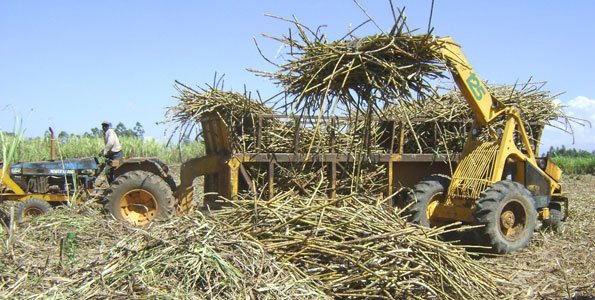By Isaac Christopher Lubogo
Introduction: The Sweetness of Sugar, the Bitterness of Exploitation
There is a quiet empire in Uganda—an empire of wealth that stands on the shoulders of the hungry. It is the empire of sugarcane. And in Busoga, it is not just a crop—it is the untold history of exploitation, economic apartheid, and hidden value. The names Madhvani and Mehta echo in national economic rankings, yet the names of the outgrowers—the ones who bleed the land—are buried beneath dust and debt.
To understand Uganda’s sugar paradox, take a trip to Kakira. Enter the palatial estate of the Madhvani family, with its colonial bungalows, private schools, private hospitals, paved gardens, and air-conditioned boardrooms. Then step across the fence to Polota Kakira—a nearby outgrower village—where the roads are impassable, children walk barefoot to underfunded schools, clinics are stockless, and sugarcane farmers sit idle, waiting for payment that barely feeds their families.
This is not capitalism. It is feudalism in modern packaging.
The Manufactured Illusion of Benevolence
The sugar barons have sold a seductive story to Uganda and the world—that they are job creators, investors, and development partners. But here lies the most painful truth: these empires are built on the unpaid dreams of outgrowers. The sugar mills rely on poor rural farmers who supply raw cane at exploitative prices, with no say in processing, pricing, or profit. The value chain is vertically monopolized, and knowledge of byproducts is carefully hidden.
Ask the average cane farmer what bagasse is used for. Ask them what molasses is worth. Ask them if they’ve ever seen a distillery, ethanol plant, or bioplastics factory. Most will tell you sugar is all they know—and even that, they don’t own. The wealth of sugarcane is not just untapped—it has been systematically concealed.
The Sacred Cane: An Untapped Empire Hiding in Plain Sight
Let’s be clear: there is no waste in sugarcane. Every part of it is wealth.
From just one stalk of sugarcane:
Sugar is extracted (only 10–15% of value).
Bagasse generates electricity (Kakira alone powers over 50MW).
Molasses becomes alcohol, ethanol, and industrial spirits.
Filter mud and vinasse are used as high-grade organic fertilizers.
Tops and leaves feed livestock and preserve soil.
Bagasse pulp becomes biodegradable packaging and bio-plastics.
The plantation qualifies for carbon credits worth billions globally.
And what does the local farmer get? A seasonal payment that barely pays for school fees and paraffin.
A Game of Concealment and Control
This is the puzzle: Why are Basoga—sitting atop Uganda’s richest agro-commodity—still among the poorest? The answer lies not in laziness or lack of effort. It lies in informational apartheid. The science of sugarcane’s full potential is guarded, locked away in corporate corridors, foreign consultancy reports, and exclusive industrial networks.
Madhvani and Mehta families run closed-loop economies: they own the land, process the cane, run the distilleries, export the ethanol, produce their own electricity, sell to the national grid, and use the by-products to fertilize their next crop. The farmer, meanwhile, remains locked in a mono-dimensional relationship: “grow cane, deliver cane, wait for payment.”
This is structural underdevelopment by design.
How to Break the Chain: From Outgrowers to Outthinkers
To reverse this injustice, Busoga must move beyond cane farming to cane economics. This means:
Establishing Basoga-owned ethanol and bioplastic cooperatives to process molasses and bagasse.
Decentralizing electricity generation through rural bagasse-fed microgrids.
Unlocking carbon credits for each cane plantation by meeting sustainable benchmarks.
Training local youth in agro-processing, distillation, packaging, and agricultural engineering.
Forcing policy reforms that guarantee farmers access to by-products and allow localized licensing.
Using data to drive bargaining power: Yield data, pricing data, and processing margins must be public.
Knowledge must move from warehouses to grassroots.
Conclusion: Reclaim the Cane, Reclaim the Crown
The cane has never been the enemy. The enemy is the conspiracy of silence, the colonization of value, and the centralization of knowledge. If Basoga dare to see sugarcane not as a harvest but as an industry, not as a plant but as a platform, they will finally dismantle the poverty paradox.
We must no longer ask how Madhvani became rich—we know the answer. The real question is: Why did we allow them to get rich off our ignorance?
Busoga is not poor. It is strategically starved. But the day it begins to refine, reimagine, and reclaim the cane—not just for sugar, but for power, fuel, finance, and freedom—that is the day it will rise from plantation to prosperity.
Because sugarcane, handled rightly, is not just sweet.
It is liberation, waiting to be harvested.
Sugar is not just sweet—it is sovereignty waiting to be claimed.
About the author:
The writer, Isaac Christopher Lubogo, is a renowned Ugandan lawyer and lecturer








